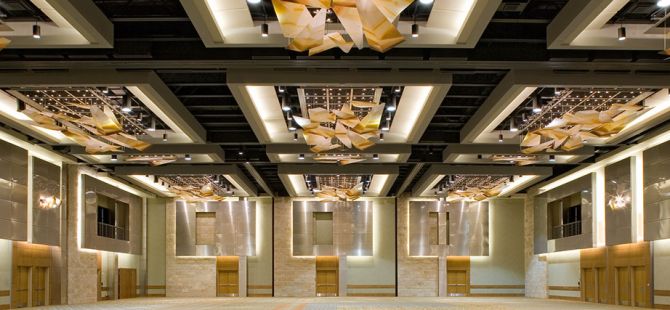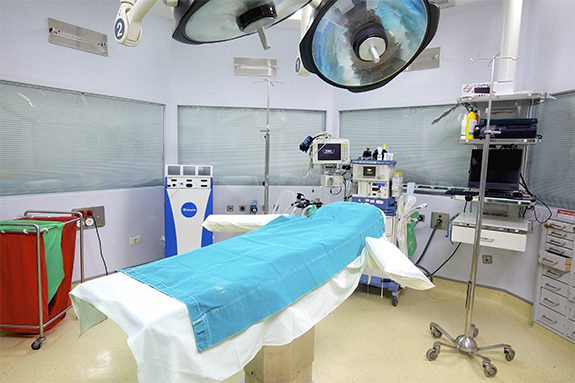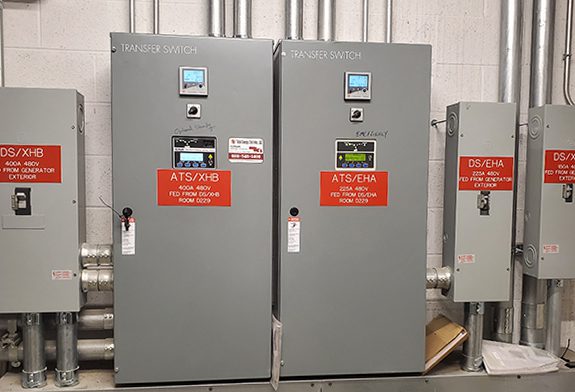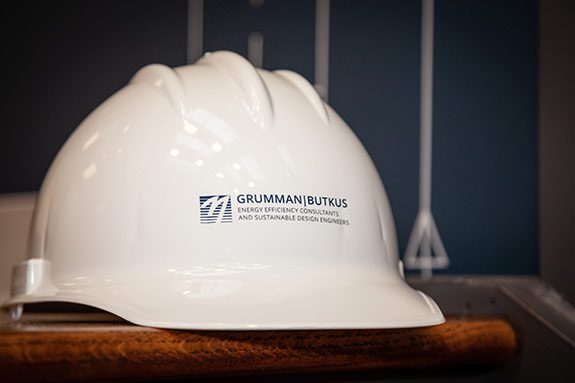G/BA engineers have developed strategies to help with common pain points for hotel and resort facility managers.
Contact us for assistance if you’re experiencing any of the following HVAC issues, and stay tuned for Part 2, Electrical/Plumbing, next week.
Pressurization and stack effect issues
- A negatively pressurized building can suffer from unwanted infiltration of unconditioned outdoor air. In cold climates, this can mean drafts and cold temperatures near building entrances. In warm humid climates, this can lead to high relative humidity and condensation on diffusers and other cold surfaces inside the building. In some cases, pressurization problems lead to difficulties with doors, making them hard to open or prone to slamming.
- Pressurization is generally tied to an imbalance between the exhaust systems and the supply or makeup systems that supply conditioned air to compensate for the air being exhausted.
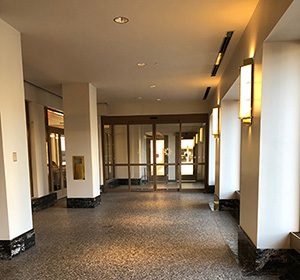
Above: Fixing stack effect issues may require mechanical solutions,
non-mechanical solutions (like new vestibule doors), or a combination of the two.
- “Stack effect” is a general term that describes the movement of air in and out of buildings due to the inherent difference in the density of warm air and cold air. The taller the building, the greater the effect. This is most pronounced in winter, leading to cold air entering the building through entry doors, loading docks, and other exterior openings, while warm air exits through leaks at elevator shafts, smoke vents, penthouses, and general building exfiltration.
- A thorough analysis of each hotel’s unique issues will suggest solutions, which may be mechanical (equipment changes, controls adjustments), non-mechanical (new vestibule doors, high-speed garage door closers, and the like), or both.
Frozen coils
- Engineering staff for hotels in locations where the outside air temperature can drop below freezing are well aware of the headaches that accompany a frozen coil. As winter approaches, facility managers become expert calendar and thermometer watchers to determine if they need to drain coils to prevent freeze-ups.
- Draining a coil is not as simple a matter as opening a plug and letting the water run out. Instead, the water must be blown out with a combination of techniques involving compressed air and glycol. The effort takes money, time, equipment, and chemicals that require careful collection or disposal, all to avoid a frozen coil.
- G/BA suggests a unique method that eliminates the need for this yearly ritual. A small initial cost to provide a connection between the supply air duct and coil piping can result in years of savings by eliminating the staff time and costs required to successfully winterize coils.
Chiller machine rooms and compliance with ASHRAE 15
- The prevailing mechanical codes for many cities and states require adherence to, and compliance with, ASHRAE 15 (Safety Standard for Refrigeration Systems) for chillers and the equipment rooms where they are located.
- Requirements include refrigeration pipe venting, mechanical exhaust systems, refrigerant leak detection monitoring systems and alarms, strobes, emergency shut-off switches, and appropriate signage.

refrigeration pipe venting, emergency shut-off switches, and other safety provisions.
- Other important requirements include incorporating a refrigerant detection system with automatic shutdown of any fuel-burning equipment that takes its combustion air from the machinery room where the chiller(s) are located.
- G/BA has designed chiller plants from the ground up as well as replacement plants for legacy systems. We’re well-versed in the best ways to bring your chiller rooms into compliance with all facets of ASHRAE 15.
High energy costs associated with ballrooms, meeting rooms, and similar spaces
- Code-required ventilation air for high-occupancy spaces such as ballrooms, meeting rooms, and conference rooms can drive the size and cost of ventilation equipment and associated cooling and heating systems.
- However, many energy codes have provisions that not only allow but actually require demand-control ventilation systems, in which sensors detect the level of carbon dioxide in the room and increase the amount of fresh ventilation air supplied, based on measurements that correlate to the number of people in the room.
- This means that a room capable of holding a lot of people does not need to bring in a lot of outside air—with its costly conditioning requirements—unless the control systems tell the air-handling units it is necessary.
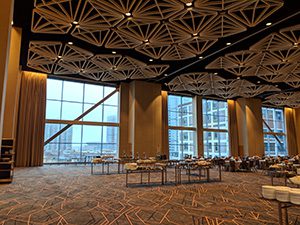
to avoid over-conditioning and excess ventilation when unoccupied.
- Prevailing energy codes now require energy recovery for air-side equipment under certain conditions. These systems and components can require significant up-front planning and space allotments, and should be factored into renovations and equipment replacement budgets.
System performance slipping in older buildings
- As facilities age and building service systems are adapted, modified, and replaced, an energy audit or retro-commissioning (RCx) exercise can help tune systems to ensure equipment is performing properly and controls are appropriately programmed.
- Many of the recommendations and suggested fixes are relatively low-cost measures that have quick payback, for high return on investment.
- An added benefit of efficiency-based investigative efforts is that many programs are subsidized in part by local utilities, which also have a vested interest in reducing energy consumption. Utilities may fund the engineer’s fee for studies, as well as offering incentives for installation of energy efficient HVAC equipment.
G/BA looks forward to assisting you with your hotel HVAC headaches. Contact us for expert advice.
Author: G/BA Project Manager Eric Rosenberg
